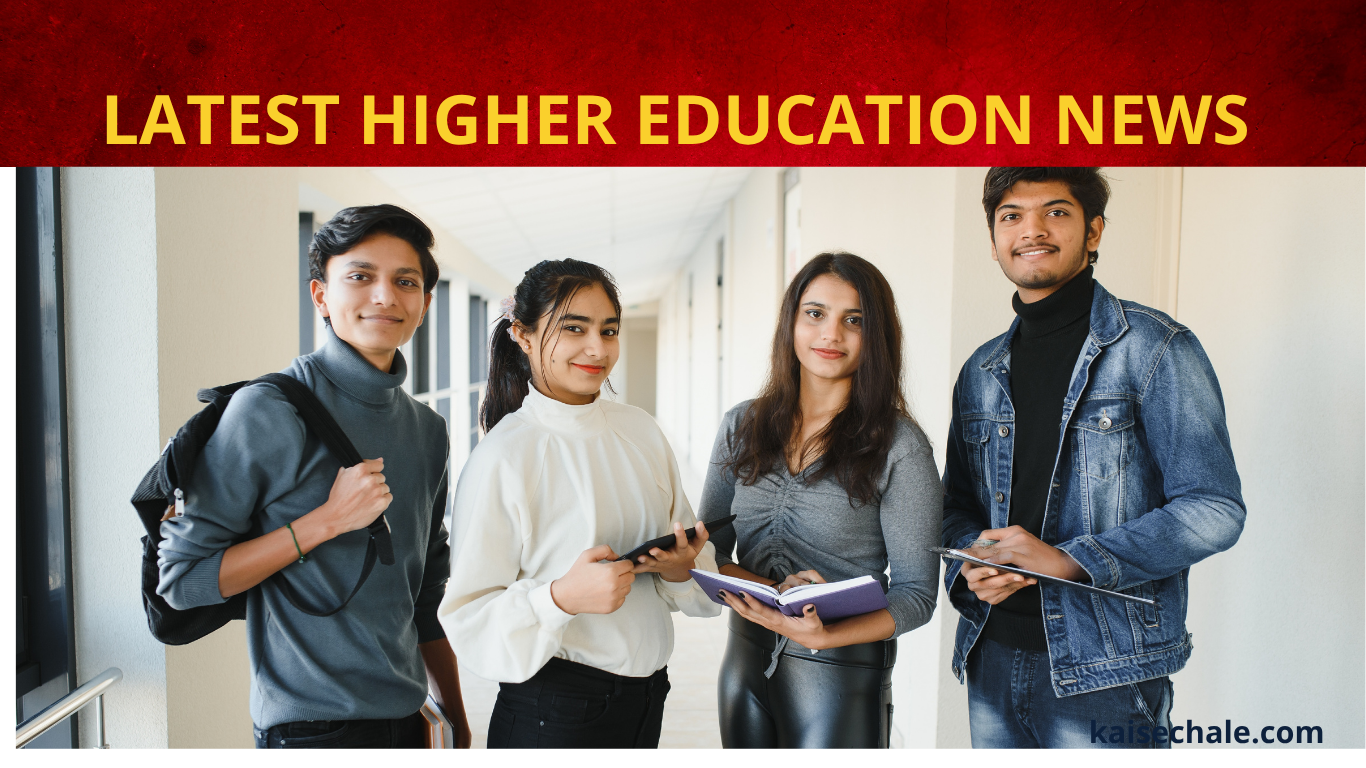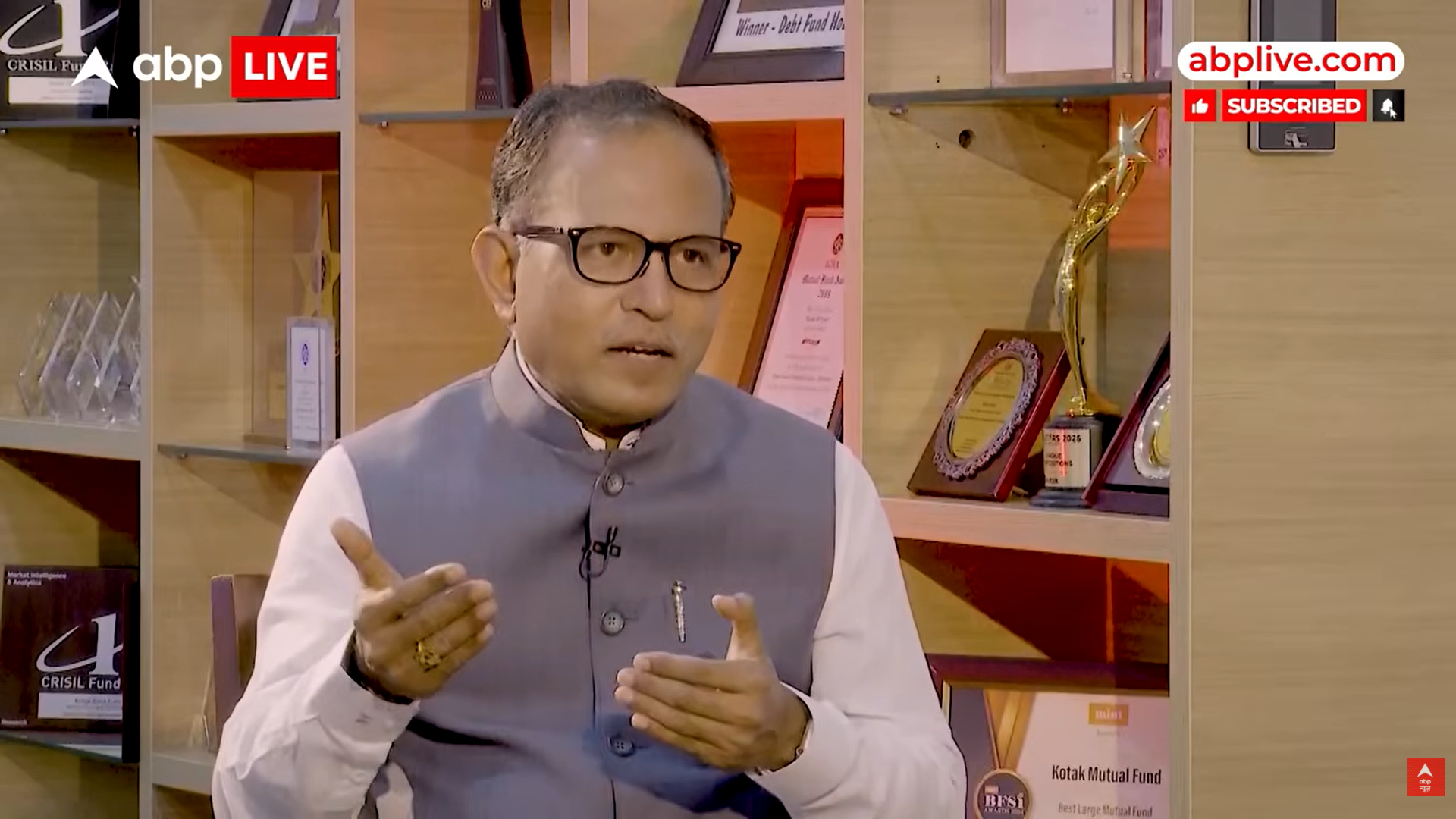
यहाँ भारत में इस सप्ताह के शीर्ष उच्च शिक्षा समाचार
भारत में इस सप्ताह के शीर्ष उच्च शिक्षा समाचारों में यूजीसी द्वारा ऑनलाइन और डिस्टेंस लर्निंग के लिए महत्वपूर्ण मंजूरी, प्रमुख अंतरराष्ट्रीय रैंकिंग, नई साझेदारी और समझौता ज्ञापन, वैश्विक विश्वविद्यालय विस्तार, नए पाठ्यक्रम लॉन्च, परीक्षा, छात्रवृत्ति और कौशल पहलों सहित कई प्रमुख विकास शामिल हैं। निम्नलिखित लेख 6 अक्टूबर 2025 के बाद सप्ताह के लिए भारत में उच्च शिक्षा को आकार देने वाली प्रमुख कहानियों और रुझानों का विस्तार से विश्लेषण प्रदान करता है, जिसमें विद्वान और नीति-केंद्रित पाठकों के लिए गहराई से संदर्भ और विवरण है।
UGC ने ऑनलाइन और डिस्टेंस लर्निंग के लिए व्यापक मंजूरी दी
विश्वविद्यालय अनुदान आयोग (यूजीसी) ने 2025-26 अकादमिक वर्ष के लिए 20 श्रेणी-1 संस्थानों और कुल 101 विश्वविद्यालयों को ओपन और डिस्टेंस लर्निंग (ओडीएल) कार्यक्रमों के संचालन के लिए मान्यता प्रदान की है। इसके अतिरिक्त, 113 विश्वविद्यालयों को ऑनलाइन पाठ्यक्रम संचालित करने की मंजूरी मिली है, जिसमें 13 संस्थानों को विशेष ऑनलाइन लर्निंग की स्वीकृति मिली है। इन ओडीएल और ऑनलाइन पाठ्यक्रमों के लिए आवेदन की अंतिम तिथि 15 अक्टूबर 2025 है। इनमें से अधिकांश विश्वविद्यालयों को अपने पाठ्यक्रमों के लिए अलग से एआईसीटीई की मंजूरी की आवश्यकता नहीं है। यह कदम यूजीसी (ओपन एंड डिस्टेंस प्रोग्राम्स एंड ऑनलाइन प्रोग्राम्स) रेगुलेशन, 2020 द्वारा दिए गए नियामक समर्थन का विस्तार है।
नीति प्रभाव और संदर्भ
- यह बड़ी मंजूरी 2035 तक उच्च शिक्षा में ग्रॉस एनरोलमेंट रेश्यो (जीईआर) को 50% तक ले जाने के राष्ट्रीय शिक्षा नीति (एनईपी) 2020 के लक्ष्य की ओर एक महत्वपूर्ण कदम है, जिससे लचीले और सुलभ लर्निंग रास्ते विस्तारित होते हैं।
- यह डिजिटल और आजीवन लर्निंग को भारतीय शिक्षा परिदृश्य में मुख्य धारा में लाने पर यूजीसी के ध्यान को दर्शाता है।
IIT पलक्कड़ और मंत्रालय: वंचित समूहों के लिए तकनीकी कौशल
समाजिक समावेशन के प्रयास में, आईआईटी पलक्कड़ ने 8 अक्टूबर 2025 को अल्पसंख्यक कार्य मंत्रालय के साथ प्रधानमंत्री विरासत का संवर्धन (पीएम विकास) योजना के तहत समझौता ज्ञापन पर हस्ताक्षर किए। यह सहयोग केरल के अल्पसंख्यक समुदायों के 400 युवाओं को नवाचार क्षेत्रों में ट्रेंड करने के लिए है। प्रतिभागियों को व्यावहारिक प्रशिक्षण के साथ स्टाइपेंड और प्रशिक्षण के बाद प्लेसमेंट या उद्यमिता सहयोग भी मिलेगा।
सामाजिक और शैक्षिक महत्व
- यह पहल सरकार की तकनीकी और नवाचार क्षेत्रों में प्रतिनिधित्व रहित समूहों को सहयोग देने की प्रतिबद्धता का उदाहरण है।
- यह भविष्य के लिए तैयार प्रतिभा निर्माण और समावेशी विकास को बढ़ावा देने का हिस्सा है।
2026 टाइम्स हायर एजुकेशन वर्ल्ड यूनिवर्सिटी रैंकिंग: भारत की हिस्सेदारी
टाइम्स हायर एजुकेशन (टीएचई) वर्ल्ड यूनिवर्सिटी रैंकिंग 2026 इस सप्ताह जारी की गई, जिसमें 100 देशों के 1,900 संस्थानों का मूल्यांकन हुआ। लगातार दसवें साल ऑक्सफोर्ड विश्वविद्यालय नंबर एक पर रहा, जिसके बाद एमआईटी और प्रिंसटन हैं।
भारत ने रैंक्ड विश्वविद्यालयों की संख्या में विश्व स्तर पर दूसरा स्थान पाया, जिसमें 128 संस्थान शामिल हैं। भारतीय संस्थानों में भारतीय विज्ञान संस्थान (आईआईएससी), बेंगलुरु सर्वोच्च रहा, जो 201-250 वैश्विक समूह में है। अन्य टॉप भारतीय संस्थानों में सेविता इंस्टीट्यूट ऑफ़ मेडिकल एंड टेक्निकल साइंसेज, जामिया मिलिया इस्लामिया, शूलिनी यूनिवर्सिटी, आईआईटी इंदौर, बनारस हिन्दू विश्वविद्यालय, केआईआईटी, लवली प्रोफेशनल यूनिवर्सिटी और यूपीईएस शामिल हैं।
परिणाम और विश्लेषण
- 128 भारतीय संस्थानों की हिस्सेदारी भारत की बढ़ती वैश्विक शैक्षणिक पहचान का प्रमाण है, हालांकि शीर्ष स्थान अभी दूर हैं।
- यह शोध केंद्रित और वैश्विक प्रतिस्पर्धी विश्वविद्यालयों को बढ़ावा देने वाली नीति पहलों को मान्यता देता है।
- रैंकिंग में अमेरिकी संस्थानों की गिरावट और एशियाई विश्वविद्यालयों की स्थिरता भी दिखाई दी।
यूके विश्वविद्यालयों ने भारत में विस्तार की घोषणा की
नौ ब्रिटिश विश्वविद्यालयों ने भारत भर में अपने परिसरों की घोषणा की। यूके-इंडिया एजुकेशन पार्टनरशिप तब और मजबूत हुई जब साउथैम्पटन विश्वविद्यालय का गुड़गांव परिसर पूरी तरह कार्यात्मक हो गया, लैंकेस्टर यूनिवर्सिटी ने बेंगलुरु परिसर के लिए पत्र-के-इरादे पर हस्ताक्षर किए, और सरे यूनिवर्सिटी को गिफ्ट सिटी के लिए मंजूरी मिली। लिवरपूल, यॉर्क, एबरडीन, और ब्रिस्टल विश्वविद्यालय भी शामिल हैं।
रणनीतिक महत्व
- यह कदम भारत की वैश्विक शिक्षा स्थल के रूप में प्रतिष्ठा को बढ़ाता है और द्विपक्षीय संबंधों की परिपक्वता का प्रमाण है।
- यह विस्तार क्रॉस-बॉर्डर उच्च शिक्षा और ज्ञान हस्तांतरण को भी बढ़ाता है।
नए और विशेष शैक्षणिक कार्यक्रमों की शुरुआत
इस सप्ताह कई संस्थाओं ने नवीन और कॅरियर-ओरिएंटेड कार्यक्रमों की घोषणा की:
- भारतीय स्कूल ऑफ बिजनेस (आईएसबी) ने एमेरिटस के साथ मिलकर 22 हफ्ते का ऑनलाइन “वेंचर कैपिटल और प्राइवेट इक्विटी प्रोग्राम” लॉन्च किया, जिसमें मध्य और वरिष्ठ पेशेवरों को स्किल करने का उद्देश्य है। पाठ्यक्रम में डील सोर्सिंग, वैल्यूएशन, ड्यू डिलिजेंस, पोर्टफोलियो प्रबंधन आदि शामिल हैं। 30 दिसंबर 2025 से प्रारंभ होने वाले इस कार्यक्रम की फीस 4,61,000 रुपये (जीएसटी अतिरिक्त) है।
- आईआईटी मद्रास ने वर्टिव और आईआईटी मद्रास प्रवर्तक टेक्नोलॉजीज फाउंडेशन के साथ साझेदारी में 2,000 एसटीईएम छात्रों को डाटा सेंटर ऑपरेशन और डिजिटल इन्फ्रास्ट्रक्चर में ट्रेनिंग देने के लिए कार्यक्रम शुरू किया है, जिसमें 35-घंटे का स्वयं-गतिक कोर्स और 5-दिवसीय कैम्पस प्रोग्राम भी शामिल है। चयनित छात्रों को अंत में प्रमाण पत्र मिलेगा।
भारतीय प्रतिभा के लिए प्रासंगिकता
- ऐसे स्किलिंग प्रयास उद्योग-शैक्षणिक अंतर को पाटने, नवाचार को बढ़ावा देने, और डिजिटल अर्थव्यवस्था के लिए वर्कफोर्स तैयार करने में महत्वपूर्ण हैं।
परीक्षा और छात्रवृत्ति अपडेट्स
- यूपीएससी संयुक्त रक्षा सेवा (सीडीएस 2) के परिणाम घोषित हुए; 9,085 उम्मीदवार इंटरव्यू के लिए चयनित हुए।
- NTA स्वयम परीक्षा 2025 की पंजीकरण प्रक्रिया 648 पाठ्यक्रमों के लिए शुरू हो चुकी है, परीक्षा दिसंबर में और पंजीकरण अक्टूबर के अंत तक खुले रहेंगे। यह राष्ट्रीय स्तर का एमओओसी प्रमाणन लाखों छात्रों के लिए स्व-गत और सुलभ अध्ययन के अवसर लाता है।
- लीड्स विश्वविद्यालय ने 2026 के इंटरनेशनल एक्सीलेंस छात्रवृत्ति की घोषणा की, जिससे 500 अंतरराष्ट्रीय छात्र (जिसमें भारतीय भी शामिल हैं) लाभान्वित होंगे; पात्र छात्र £3,000, £6,000, या £16,000 की छात्रवृत्ति पा सकते हैं।
हायर-एड टेक्नोलॉजी और एआई को अपनाना
हालिया रिपोर्टों के अनुसार, 60% से अधिक भारतीय उच्च शिक्षा संस्थाएं छात्रों को जनरेटिव एआई टूल्स उपयोग करने की अनुमति दे रही हैं, जबकि 50% से अधिक ने सीखने की सामग्री और प्रबंधकीय प्रक्रिया के विकास में एआई को अपनाया है। इससे डिजिटल शिक्षा प्रणाली की ओर तीव्र संक्रमण झलकता है।
वृहद रुझान और चिंतन
- सप्ताह भर की खबरें सरकार और संस्थाओं की अंतरराष्ट्रीयकरण, शैक्षिक समानता और उभरती तकनीकी को अपनाने की दृढ़ प्रतिबद्धता को दिखाती हैं।
- विदेशी विश्वविद्यालयों का विस्तार और घरेलू स्तर पर ऑनलाइन शिक्षा के लिए मजबूती से नियामक समर्थन भारत की शिक्षा प्रणाली की प्रतिस्पर्धा और वैश्विक एकीकरण को दर्शाते हैं।
- समावेशी कौशल विकास, उद्योग-विशेषीकृत प्रमाणपत्र कार्यक्रम, और डिजिटल कक्षाओं व कंटेंट का रूपांतरण प्रमुख थीम हैं।
यह विश्लेषण 6 अक्टूबर 2025 के बाद भारत के उच्च शिक्षा के सभी मुख्य अपडेट का समावेश करता है, जिसमें हर पहलू की रणनीतिक, नीतिगत व सामाजिक-आर्थिक प्रासंगिकता को रेखांकित किया गया है। इसमें कवर की गई घटनाएँ समकालीन रिपोर्टिंग और विश्लेषण पर आधारित हैं, तथा भारतीय विश्वविद्यालयों, छात्रों और शैक्षणिक पेशेवरों को प्रभावित करने वाले सबसे प्रासंगिक घटनाक्रमों का प्रतिनिधित्व करती हैं।
ENGLISH ARTICLE
The top higher education news in India this week (after 6 October 2025) covers a significant range of developments, including new UGC approvals for online and distance learning, major international rankings, new partnerships and MoUs, global university expansions, fresh course launches, and examination, scholarship, and skills initiatives. The following article provides a comprehensive analysis of the major stories and trends shaping higher education in India for the week after October 6, 2025, with extensive detail and context for scholarly and policy-focused readers.
UGC Grants Massive Approvals for Online and Distance Learning
The University Grants Commission (UGC) has granted recognition to 20 Category-1 institutions and a total of 101 universities for offering open and distance learning (ODL) programs for the 2025-26 academic year. Additionally, 113 universities were approved to deliver online courses, with 13 institutes receiving sanction for specialized online learning offerings. The deadline for applying to these ODL and online courses is October 15, 2025. Notably, most of these universities do not require separate AICTE approval for their courses. This move is a continuation of the regulatory robustness given by the UGC (Open and Distance Programmes and Online Programmes) Regulations, 2020.learningroutes
Policy Impact and Context
- This large-scale approval marks a crucial step towards the National Education Policy (NEP) 2020 goal of Gross Enrolment Ratio (GER) in higher education reaching 50% by 2035 by expanding flexible and accessible learning pathways.
- It demonstrates the UGC’s focus on mainstreaming digital and lifelong learning into the Indian education landscape.
IIT Palakkad and Ministry of Minority Affairs: Technical Skills for Marginalized Groups
In a noteworthy effort towards social equity and inclusion, IIT Palakkad signed a Memorandum of Understanding (MoU) with the Ministry of Minority Affairs under the Pradhan Mantri Virasat Ka Samvardhan (PM VIKAS) scheme on October 8, 2025. This collaboration is targeted at training 400 individuals from minority communities in Kerala in high-demand technical skills for emerging fields. Participants not only receive practical training but are also awarded stipends and provided placement or entrepreneurship support after the program.
Social and Educational Significance
- This initiative reflects the government’s commitment to supporting underrepresented groups in the technology and innovation sectors.
- It is part of a larger national push to create future-ready talent and foster inclusive growth.
2026 Times Higher Education World University Rankings: India’s Performance
The Times Higher Education (THE) World University Rankings 2026 were released this week, with 1,900 institutions from 100 countries evaluated globally. The University of Oxford retained the number one spot for the tenth consecutive year, followed by MIT and Princeton.
India stood out by securing the second-highest number of ranked universities worldwide, with 128 institutions featured. The Indian Institute of Science (IISc), Bangalore, topped the Indian list, remaining in the 201-250 global band. Other top Indian institutions included Saveetha Institute of Medical and Technical Sciences, Jamia Millia Islamia, Shoolini University, IIT Indore, Banaras Hindu University, KIIT, Lovely Professional University, and UPES.
Implications and Analysis
- The presence of 128 Indian institutions signals India’s growing recognition in global academia, though the top ranks remain elusive.
- This development validates policy drives promoting research-intensive and globally competitive universities.
- The rankings also highlighted a general decline for US institutions and stagnation for leading Asian universities.
UK Universities Announce Expansion in India
A standout international development, nine British universities announced plans to open campuses across India. The UK-India education partnership stepped up as the University of Southampton’s Gurugram campus became fully operational, while Lancaster University signed a Letter of Intent for a Bengaluru campus, and Surrey University was approved for GIFT City. Others joining include Liverpool, York, Aberdeen, and Bristol.
Strategic Significance
- These moves strengthen India’s stature as a preferred global education destination and mark the maturing bilateral relationship in education and research.
- The expansion signifies increasing cross-border higher education and knowledge transfer.
Launch of New and Specialized Academic Programs
Several institutions announced innovative and career-oriented programs this week:
- The Indian School of Business (ISB), in collaboration with Emeritus, unveiled a 22-week online “Venture Capital and Private Equity Programme,” aimed at upskilling mid- and senior-level professionals. The curriculum covers deal sourcing, valuation, due diligence, portfolio management, and more. The program launches on December 30, 2025, at a cost of INR 4,61,000 (plus GST).
- IIT Madras launched a partnership with Vertiv and the IIT Madras Pravartak Technologies Foundation to train 2,000 STEM students in data center operations and modern digital infrastructure. This includes a 35-hour self-paced online course and a 5-day immersive campus program for selected students, culminating in a “Certified Intelligent Data Centre-Operations & Maintenance” certification.
Relevance for Indian Talent
- Such upskilling initiatives are vital for bridging industry-academia gaps, fostering innovation, and equipping the workforce for the expanding digital economy.
Major National Exam Updates and Scholarships
- UPSC Combined Defence Services (CDS 2) results were announced; 9,085 candidates qualified for interviews.
- NTA Swayam Examination 2025 Registration is now open for 648 courses, with exams scheduled in December and registrations closing at the end of October 2025. This national-level MOOC certification program further opens doors to self-paced and affordable learning for millions.
- The University of Leeds International Excellence Scholarship for 2026 was announced, benefitting 500 international students (including those from India), offering scholarships of £3,000, £6,000, or £16,000 for high-achieving undergraduates and postgraduates.
Higher Ed Technology and AI Adoption
Recent reports also indicate that over 60% of Indian higher education institutions are now permitting the use of generative AI tools by students, and more than 50% have adopted AI for developing learning materials and administrative processes. This reflects a fast-shifting landscape towards digitally driven education and pedagogical change in the Indian HEI sector.
Broader Trends and Reflections
- The week’s news demonstrates a firm government and institutional commitment towards internationalization, equity in education, and strategic adoption of emerging technologies in higher education.
- The expansions of foreign universities, combined with robust domestic regulatory support for online education, evidence the growing competitiveness and global integration of India’s higher education system.
- Grassroots skill development for marginalized groups, industry-specialized certification programs, and the digital transformation of classrooms and content together constitute the major themes.
This roundup synthesizes all major higher education updates from India for the week following October 6, 2025, emphasizing the strategic, policy, and socioeconomic relevance of each development. The events covered are grounded in official and contemporary reporting and analysis, and represent the most relevant advancements affecting Indian universities, students, and academic professionals at a national and international level.







